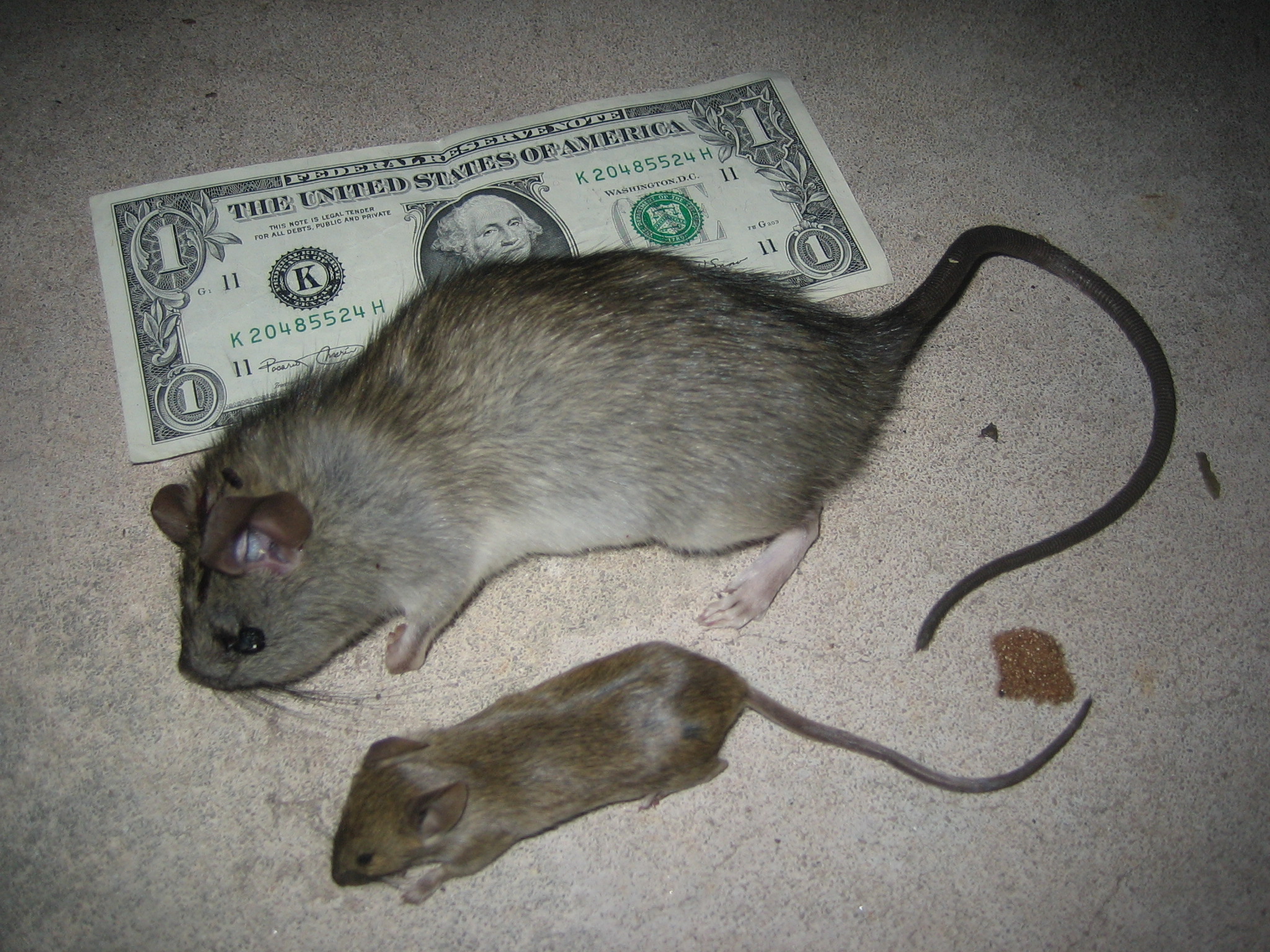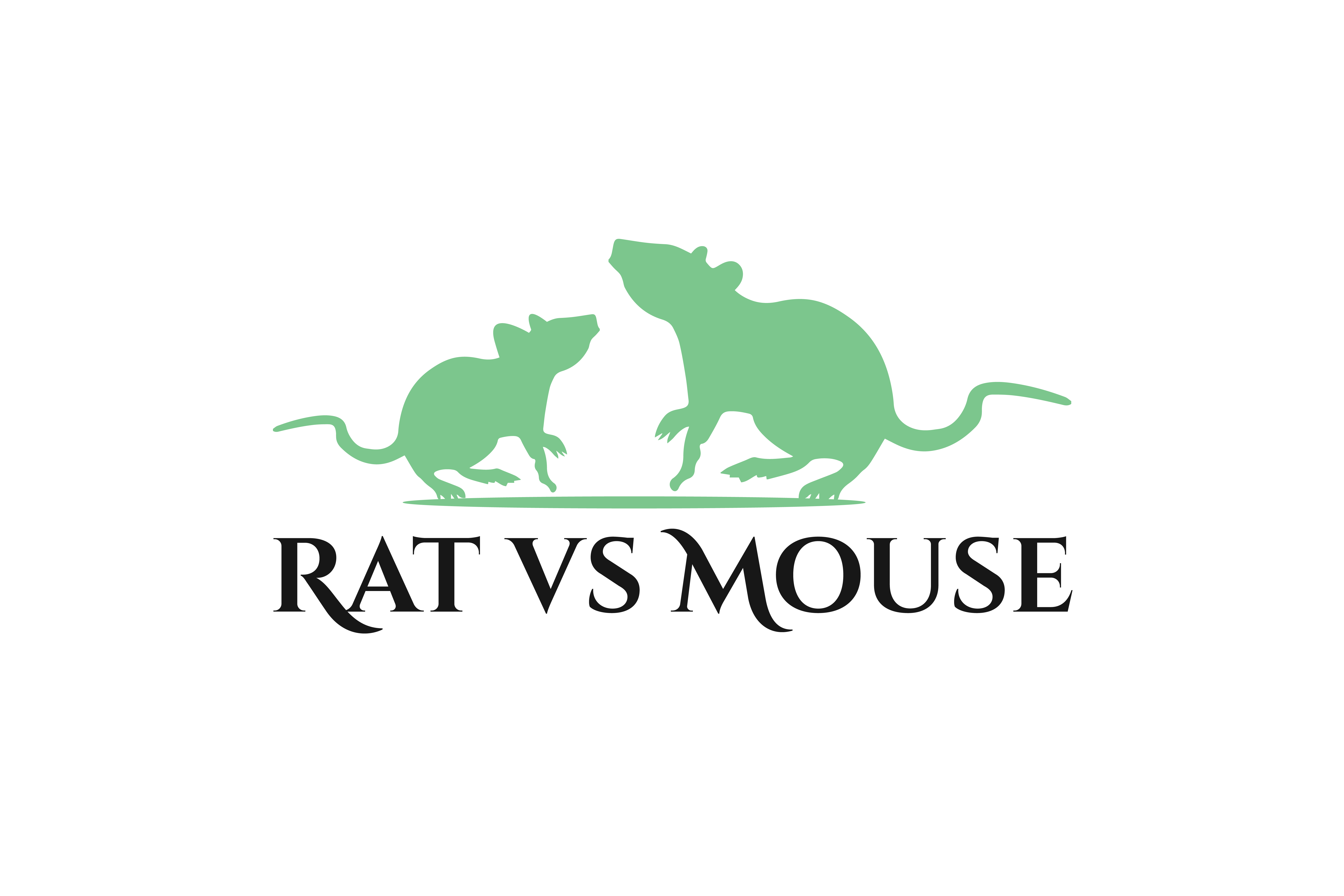
If you catch sight of a rodent scurrying away when you enter a room, hear scratching or squeaking sounds within a room, the walls, or your attic, or if you see pellets in cabinets or along the baseboards of your home, you likely have a rodent infestation. Although there are many species of mice, the ones most typically found in homes and buildings are appropriately named house mice. Norway rats and roof rats are the species of rats most likely to get into your home or building. Norway rats are commonly found in the northern states, while roof rats usually reside in the south.
So how do you know which rodent is infesting your home?
Appearance
If you actually see the rodent, you should be able to determine what it is. House mice are not only smaller than Norway and Roof rats, they also look different.

Mice
- are between 3-4 inches long
- have thin tails 2-4 inches long
- are typically grey
- have small bodies
- have prominent ears
- have small, pointed heads
- have small feet
Norway Rats
Rats are larger than mice. Norway rats are the larger of the two commonly found in houses. Norway rats:
- can reach as long as ten inches
- have thick tails that are slightly shorter than their bodies
- usually weigh 18 ounces or more (mice weigh only a few)
- have thicker, stouter bodies than both mice and Roof rats
- have smaller ears and eyes than Roof rats
- are usually brown or grey in color
Roof Rats
- are typically around eight inches long
- have thick tails a little longer than their bodies
- have a more slender body than Norway rats
- have more prominent eyes and ears than Norway rats
- may be black, as they are commonly called black rats (but they can be dark to light brown as well)
Droppings
Although all rodent droppings are typically black, the droppings of rats and mice look different. You can use the droppings to determine which rodent is infesting your home.

Mice
- $tend to leave more droppings
- $have droppings about the size of rice
- $droppings are hard and pointed
Rats
- $do not leave as many droppings as mice
- $have droppings 1/2-3/4 inches long
- $droppings are crescent-shaped
The presence of droppings may not mean you have a current infestation. Fresh droppings will be shiny and putty-like to the touch, but older droppings will be dull and may even crumble when you touch them.
Footprints
Another way to determine which rodent is infesting your home is to look at the footprints they leave in dusty areas. If there is no dust, sprinkle some talcum powder or flour lightly in the area where you think they are traveling to see the footprints.
Mice
- $have smaller feet with smaller footprints
- $footprints are about 1/4 inch
Rats
- $have larger feet
- $footprints are about 3/4- inch long
You are not likely to confuse baby rat prints with mice prints because a young rat won’t be venturing out on its own; larger footprints would show up as well.
Grease Marks
Check along the bottoms of your walls for marks. Both mice and rats carry oil and dirt on their skin; however, rats are more likely to follow the same path through your home. They stick close to the wall as well, so they will leave behind a greasy trail as they go along the wall. Mice may leave greasy rub marks if they exit or enter a hole, but it won’t be along the baseboards of your walls.
- $Rats are more likely to leave a greasy trail along the wall.
Urine Pillars
Mice will often urinate in one particular area. When their urine dries, it leaves behind a pillar of dirt and oil. These tiny pillars may have a small urine trail leading to it. If you find urine pillars, then you have a mouse infestation rather than rats.
- $Mice often leave urine pillars and trails.
Gnaw Marks
All rodents gnaw to keep the size of their incisors down. However, rats may gnaw on walls, but mice do not. While you may find evidence of shredded paper and other materials from any rodent, if you find gnaw marks on your walls, then you have a rat infestation. If a rat gnaws a hole in your wall, it will have rough, ragged edges.
- $Gnawed holes in your walls are likely done by rats.
Visibility
Rats tend to only venture out at night. Mice, on the other hand, are more curious and like to explore their surroundings. If you see a rodent during the daytime or in a well-lit area at night, it is likely a mouse. You will rarely encounter a rat during the day in your home.
- $Mice tend to venture out more during the day.
